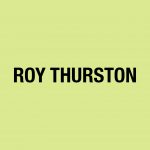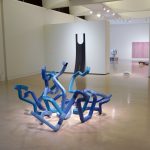Joshua Hashemzadeh : 아티스트와 갤러리 모두 불확실한 미래에 대한 해결책을 찾고 있는 요즘, 작가님의 작업실은 현재 어떠한 상황이고 작업실 너머의 바깥 세상과는 어떻게 소통하고 있는지 궁금합니다.
With artists and galleries alike trying to find ways to navigate a rather uncertain future, I wonder what your studio practice looks like today and how you’re interacting with a world beyond the studio?
Kang Seung Lee : 로스앤젤레스는 아직 자가격리 기간 중이며, 두 달 전부터 집에서 작업하고 있습니다. 1 월 말쯤에는 서울에 있었는데, 그때도 상황이 이미 나빠지고 있었지만 당시에는 지금처럼 될 것이라고는 상상하지 못했습니다. 저는 스튜디오에 혼자 있는 것에 꽤 익숙한 편이지만 이렇게 오랜 시간 동안 고립되는 것은 힘들었습니다. 하지만 일상을 지키고 긍정적인 태도를 유지하려고 노력하고 있습니다.
지난 몇 년 동안 관광 목적의 방문 형태로 미국과 한국을 오가며 전시를 했는데, 상황이 급격히 변해서 앞으로 한국 방문이 더 어려워 질까 걱정이 됩니다. 다행히 제가 참여한 전시들이 코로나로 인해 여러 차례 연기된 끝에 오픈은 했지만, 글이나 이메일 및 Zoom과 Facetime 같은 화상 미팅을 통해 원격으로 작품을 설치하는 것이 쉬운 일은 아니었습니다. 물론 전시는 큐레이터, 작가, 설치팀 등 많은 사람들의 협력으로 이루어지기에 한국 동료 분들의 많은 도움에 감사한 마음입니다.
Since we are still under stay-at-home order in Los Angeles, I have been working from home for the past two months. I was in Seoul briefly at the end of January. Things were already getting bad but I didn’t imagine the world become what it’s like now at that time. Even though I am quite used to being alone at the studio, it has been tough to being isolated for a long period. I am trying to keep my routine and stay positive.
I have been showing my work both in the US and Korea for the past couple of years, and it was only possible through frequent international travels. I am afraid things will change drastically from now on. I am lucky that several shows that I am part of are finally opening in Korea after repeated postponements, but it is also challenging to install works remotely facilitated through texts, e-mails and Zoom/Facetime. Exhibitions, of course, are collaborations among many people such as curators, writers, installers and artists, and I am grateful to have received immense help from my colleagues in Korea.
Joshua Hashemzadeh : 코로나19로 인해 화상 통화와 원격협업이 증가하고 있는 요즘, 2017년 전시 “ABSENCE AND DISTANCE (빈 먼 곳)”에서 디지털 방식으로 두 작가님들을 연결하는 아이디어가 어떻게 프로젝트의 핵심이 되었는지에 대해서 이야기하지 않을 수가 없는데요, 우리의 현재 상황을 고려해 볼 때 그 프로젝트에 대해 어떻게 생각하시는지 궁금합니다.
With the increased proliferation of video calling and remote collaborations throughout this pandemic, I can’t help but think of our show, ABSENCE AND DISTANCE from 2017 and how the idea of connecting digitally was really at the core of that programming. I’m curious how you view projects like that now in hindsight given our current circumstances?
Kang Seung Lee : <빈 먼 곳> 전시의 이혜인 작가의 프로젝트를 위한 우리의 첫 만남은 스크린을 통해 이루어졌습니다. 이혜인 작가는 우리가 디지털 방식으로 연락하는 동안 화면을 통해 본 것들을 그렸습니다. 제 생각에 그녀의 그림은 풍경과 정물화의 역사와 관련이 있지만 <빈 먼 곳>에서의 프로젝트는 디지털 기술을 사용하는 가능성을 탐구하면서 매우 전통적인 매체인 유화로 ‘시간’을 포착하려는 시도였다고 생각합니다. <빈 먼 곳>의 이혜인작가 작품은 저와의 콜라보 작품이라기보다는 제가 그녀의 작업과정에 참여했다고 생각합니다.
Hye-in and I had never met in person when she started the project, and our first encounter was via screen. She made paintings of what she was looking at through the screen while we are digitally connected. I think of her paintings as an attempt to capture ‘time’ with very traditional medium—oil painting in this case, which is related to the history of landscape and still life paintings, yet also intriguing as she explores the possibility of using digital technologies as part of her process. I don’t think of Hye- in’s paintings as collaborations between us but rather I was a participant in her process.
Joshua Hashemzadeh : 작가님께서는 빈 먼 곳 전시에서 70, 80 년대에 묘사된 남성의 퀴어 바디 사진을 그린 드로잉들을 주로 보여주셨습니다. 그리고 작품에서 그 인물들을 지우고 그 시대의 잊을 수 없는 전염병인 에이즈에 대해 암시하셨습니다. 작가님은 코로나19에 대하여 생각할 때 오늘날의 정치적 함의 중 떠오르는 것이 있나요? 그리고 그것이 작가님의 현재 사고방식이나 예전 작품을 보는 방식에 어떤 영향을 미쳤나요?
Your drawings from that exhibition focused largely on photographic documentations of male queer bodies as they were depicted through the 70s & 80s. Your drawings however, had removed the figures from their environments and created a haunting allusion to the AIDS epidemic of the time. Do you feel that any of those political undertones resonate today when thinking about the COVID-19 virus? And has that influenced your current thinking or the way you view these older works?
Kang Seung Lee : 솔직히, 저는 에이즈와 코로나 바이러스의 비교에 대해 여러 가지 감정을 가지고 있습니다. 두 바이러스 모두 많은 사망, 고통, 두려움 및 외상을 일으켰지만 미디어와 제도적 대응 그리고 전염 방식 등 많은 차이점이 있습니다. 저는 특히 코로나 바이러스에 대한 미국 정부의 무능한 대응, 아시아인에 대한 증오 범죄와 폭력 급증, 지역 사회의 불균형한 사망자 수를 고려했을 때, AIDS를 통해 우리가 배운 교훈은 새로운 팬데믹에 직면했을 때 가치가 있다고 생각합니다.
To be honest, I have mixed feelings about this comparison between the AIDS epidemic and the COVID- 19. These are two viruses that created lots of deaths, suffering, fear and trauma, but there are many differences as well such as media and institutional responses and modes of transmission. Having said that, I think that the lessons we learned through AIDS pandemic are valuable when facing this new pandemic, especially considering the US government’s incompetent response to COVID-19, the surging hate crimes and violence against Asians, and disproportionate number of deaths in communities of color.
Joshua Hashemzadeh : 문화가 어떠한 사건이나 상황에 의해 맥락이 바뀐다는 것은 항상 신기합니다. 우리가 이번 사건을 통해서 배운 것은 무엇이 있을까요? 그리고 그것이 예술이 앞으로 나아가는데 어떤 의미가 있을까요?
I’m always amazed at how culture becomes re-contextualized after the fact. How do you think we’ll look back at this moment? And what might this mean for the arts moving forward?
Kang Seung Lee : 우리는 여전히 코로나라는 전염병과 모든 것이 불확실한 상황 가운데 있습니다. 박물관, 미술관 및 예술가들이 예술을 공유할 수 있는 방법을 찾을 것이라고 생각합니다. 지금은 이 어려운 시기에 친구들이 공동체 의식을 유지할 수 있도록 돕는데 집중하고 싶습니다. 저는 매일 친구들에게 엽서를 씁니다.
We are still in the middle of this pandemic, and there is so much uncertainty. I am positive that museums, galleries and artists will find ways to share art regardless. For now, I would like to focus on helping friends keeping the sense of community in these difficult times. I write postcards to friends every day.
ADDITIONAL CONTENT

UNTITLED (A LOOTER WHEELS A SHOPPING CART FULL OF DIAPERS)
Kang Seung Lee | Apr 20 – Oct 20, 2017

ART BUSAN FAIR
Ross Rudel, Kang Seung Lee, and Naruse Ryo | June 2 – June 5, 2017

ABSENCE AND DISTANCE
Hyein Lee, Kang Seung Lee | Apr 4 – Apr 28, 2017
















